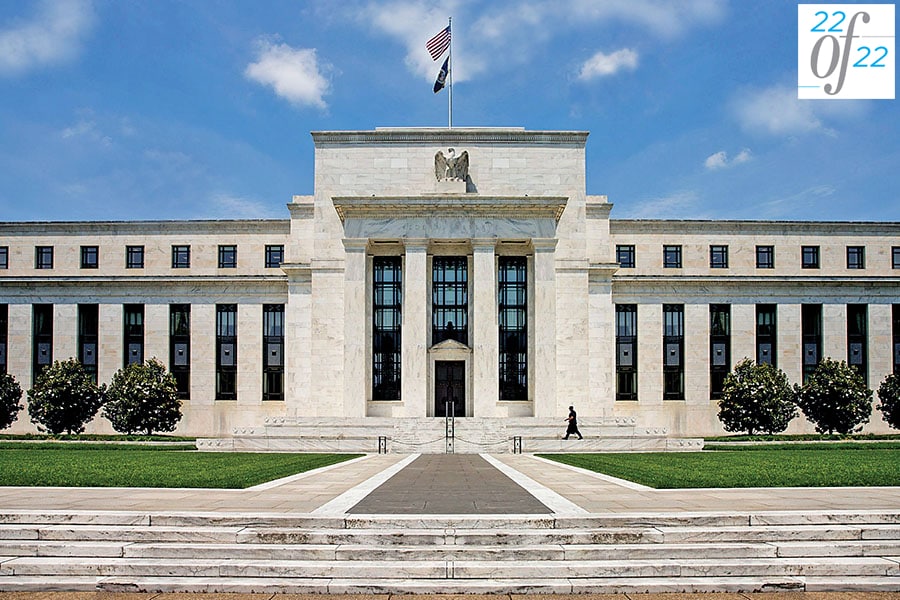
22 for 2022: Policy normalisation to continue in the new year
The US Federal Reserve rate hike cycle may cool off in the second half of 2023, and India is not entirely immune to a global slowdown
 In 2022, the US Federal Reserve has increased interest rates six times, leaving a trail of other global central banks like the Bank of Japan and the European Central Bank to do the same. Image Credit: Shutterstock
In 2022, the US Federal Reserve has increased interest rates six times, leaving a trail of other global central banks like the Bank of Japan and the European Central Bank to do the same. Image Credit: Shutterstock
As economies started to recover from the pandemic shocks amid rising inflation, central banks around the world withdrew stimulus by aggressively increasing interest rates in 2022, thus ending an era of easy and abundant liquidity, often described as monetary policy normalisation.
Slowing global growth and a tightening monetary stance on steep inflation in advanced economies have been hindering growth in emerging markets, including India, according to economists. In India, fiscal consolidation is expected to be challenging in the year ahead due to weak growth and the upcoming general elections in 2024.
Most economists expect the US Federal Reserve rate hikes to peak in the initial months of 2023 as it continues to combat inflation. According to Nomura, a developed markets recession may unleash faster disinflation in Asia from the second quarter of 2023. “The rate hiking cycle is in its finale and we expect policy rate cuts in the second half of 2023 and into 2024. Amid weak growth, fiscal consolidation plans will likely be derailed,” say Nomura economists.
In 2022, the US Fed has increased interest rates six times till the December Federal Open Market Committee (FOMC) meeting, leaving a trail of other global central banks like Bank of Japan and European Central Bank doing the same. That wiped off equity investors’ money off the table as stock markets fell as a reaction.
According to Reuters, in 2022, total interest rate hikes have been up to 2,400 basis points (bps) by G10 central banks. In 2022 so far, emerging market central banks have raised interest rates by a total of 7,165 bps, a sharp increase from 2,745 bps for the whole of 2021, Reuters data analysis shows. One basis point is one-hundredth of a percentage point.








